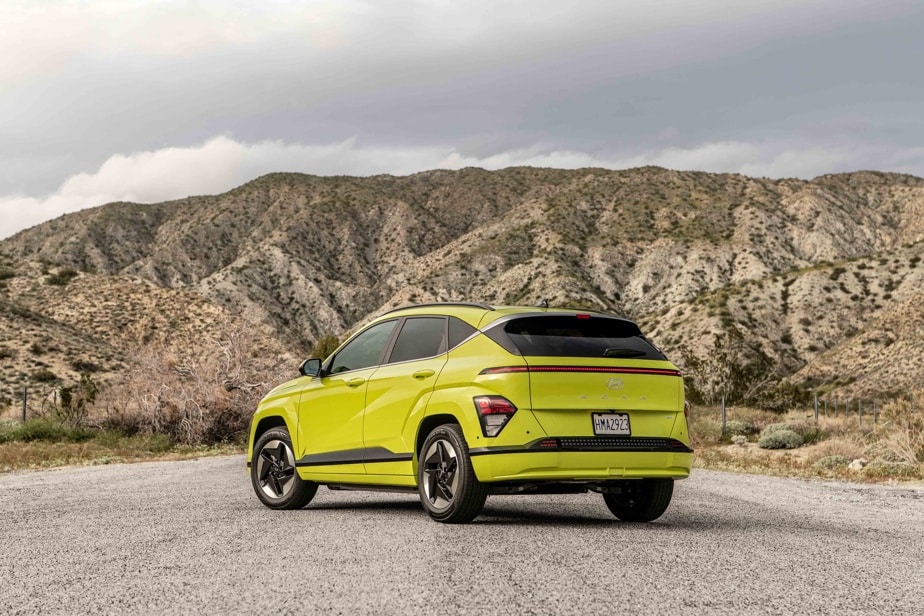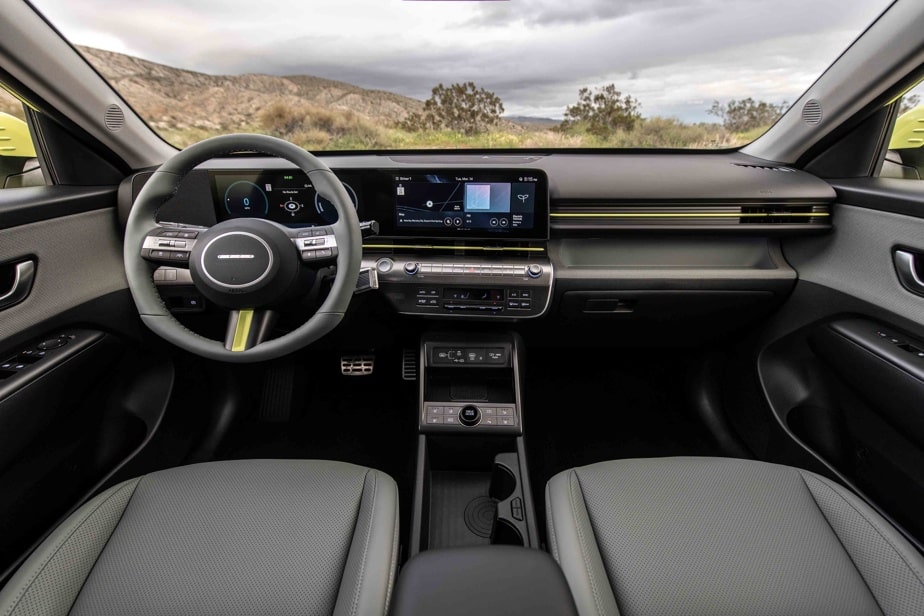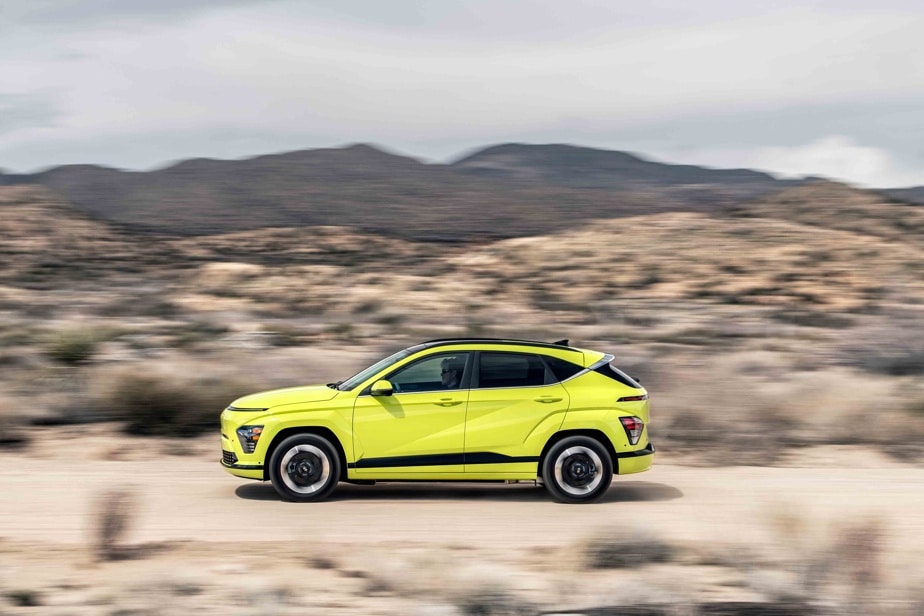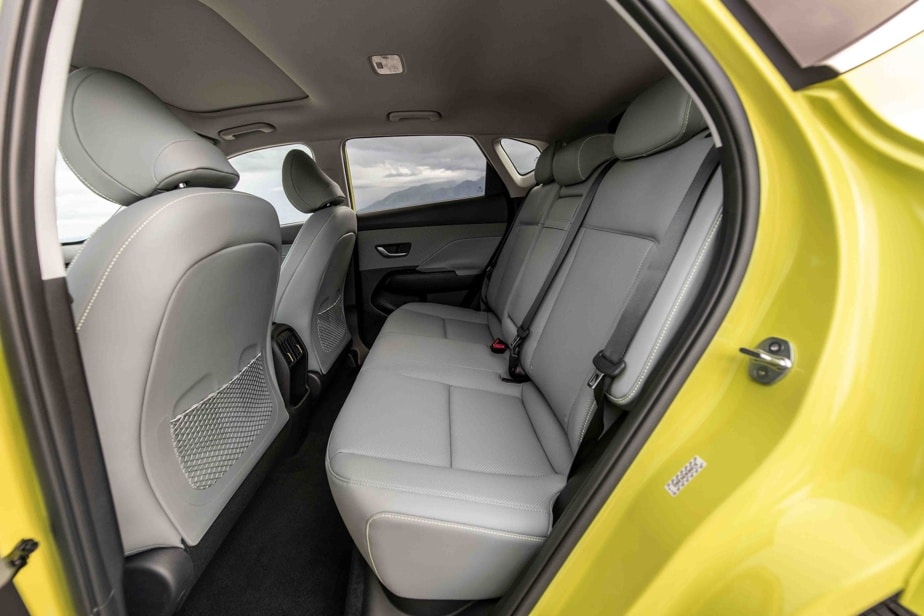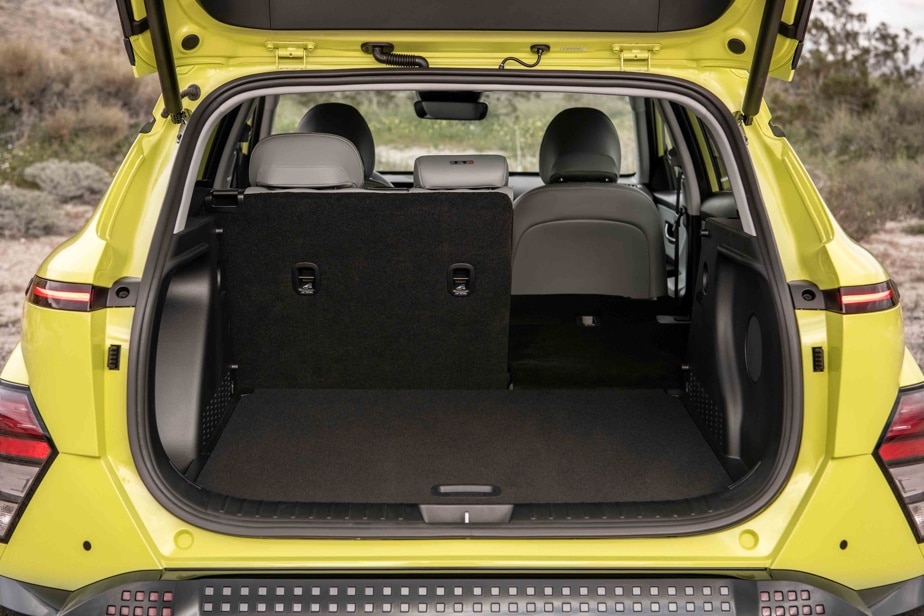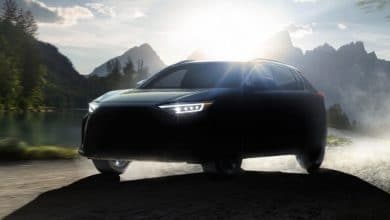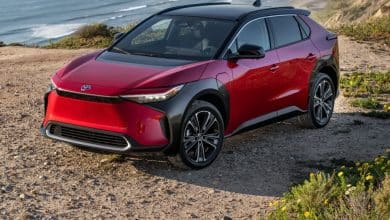
A contained price. Reassuring autonomy. A more spacious and trendy interior. The electrified version of the Kona has no shortage of arguments in its favor. But this small spaceship-looking utility vehicle loses its joviality when it frequents charging stations rather than gas pumps.
The circle is complete. A few weeks after the renewal of the gasoline version, it's the turn of the battery-powered Kona to make its debut. This second generation – this also applies to the gasoline Kona – represents more of an evolution of the previous model than a revolution. Looking at it, we doubt it because of its more futuristic plastic.
The electric version (EV) pushes the envelope a little further by pixelating its headlights, its lights and part of its fairings to mark its difference. These light effects cannot make us forget that the recharging hatch is still at the front… Even if it now includes a heating element to soften the slush and ice, this flap remains too fragile to withstand our conditions climate in the long term. He would benefit from relocating somewhere on the flanks for greater convenience. The next generation? It is to be wished!
Since it is a question of charging, this redesign allowed Hyundai to reduce the waiting time at a fast charging station. As a bonus, the Kona EV is equipped with a bidirectional charger, capable of storing electric current, but also delivering it. The battery, still heavy (425 kg), gains slightly in density (0.8 kWh) and autonomy (+ 5 km). The raw power remains the same, but the torque force is significantly less (188 compared to 291). This has a direct impact on acceleration time, but no one will notice that the 2024 Kona EV requires a few extra tenths of a second to reach 100 km/h from a standing start. The important thing to remember: this is enough to easily fit into traffic.
-
PHOTO PROVIDED BY HYUNDAI
This second generation – this also applies to the gasoline Kona – represents more of an evolution of the previous model than a revolution.
-
PHOTO PROVIDED BY HYUNDAI
The interior of the Hyundai Kona EV. The quality of the plastics is not that expected from a vehicle priced at this price.
-
PHOTO PROVIDED BY HYUNDAI
This redesign allowed Hyundai to reduce waiting times at a fast charging station. As a bonus, the Kona EV is equipped with a bidirectional charger, capable of storing electric current, but also delivering it.
-
PHOTO PROVIDED BY HYUNDAI
The rear seat of the Hyundai Kona EV
-
PHOTO PROVIDED BY HYUNDAI
The trunk of the Hyundai Kona EV
-
PHOTO PROVIDED BY HYUNDAI
The engine of the Hyundai Kona EV
1/6
Much more fun in the city
Its battery recharges more quickly and gives it a range of more than 400 km in so-called ideal conditions (read when the road is basking in the sun). In winter, the Kona EV does not lose all its capabilities. As part of this test (temperature between -8 ℃ and -15 ℃), the small South Korean utility vehicle managed to travel 325 km without refueling, on condition that the heating of the passenger compartment was managed as closely as possible. Moreover, to help you, Hyundai tattoos a switch on the dashboard which limits the diffusion of heat only to the cockpit.
The Kona EV has other tips and advice like this for saving energy. And recover it too, particularly in accordion traffic, where you can recover energy when you take your foot off the accelerator and slow down the car. You can travel for miles without ever using the brake pedal. On the highway, as soon as traffic becomes more fluid, an electric car pulls into the right lane; beyond 100 km/h, the autonomy drops at full speed. The same goes for air conditioning, which automatically reduces 30 km of range as soon as the blower starts. Yes, the electric vehicle introduces a different relationship to the automobile, but that is not painful.
That said, forget the liveliness of the gasoline-powered Kona. Driving the electric version, you feel a form of gravity when changing support.
This unpleasant feeling of inertia that electric vehicles often convey mainly manifests itself on expressways and winding roads. Around town, however, the Kona EV is a much more fun vehicle to drive. And not only thanks to its particularly short turning radius or its reduced size. Its accelerations are instantaneous, its operating silence is relaxing. There remains its suspension, which is a little too firm.
In search of extra soul
The Kona EV is certainly original, but it doesn't have any particular charm. The “Star Wars” inspiration of the cabin is not the most convincing on board. The quality of the plastics is not that expected from a vehicle priced at this price. And what about that bulky gear selector whose order of gears should be revised? Mechanically, we activate reverse when we want to move forward. On a more positive note, let's highlight the ingenuity of the storage and Hyundai's bias towards accessible and visible controls outside the sacrosanct infotainment screen.
Determined to seduce and not just to convince, the Kona EV has enhanced equipment including a head-up display on the windshield, adaptive cruise control and an induction phone charger. By virtue of which this model, which flatters Hyundai's techno-environmental image, allows many families to negotiate the electric shift without losing all their savings.
Hyundai Kona EV
Variations offered
Preferred and Ultimate
Eligible for government grants
Yes
Price range
From $46,399 to $51,199
Consumption
2 Le/100 km
WE love
Charging faster than before
More spacious interior
Reassuring autonomy
We like less
Fragile charging flap and always at the front
Fancy gear selector
Inertia when cornering
Our Verdict
A politically correct vehicle that drives almost like a real car.
Share your experience
The Press will soon publish the test of the following vehicles: Cadillac Lyriq, Chevrolet Blazer EV, Ford Ranger, Honda Prologue, Hyundai Santa FE and Mazda 3. If you own one of these vehicles or are waiting for delivery, we would like to hear from you.

